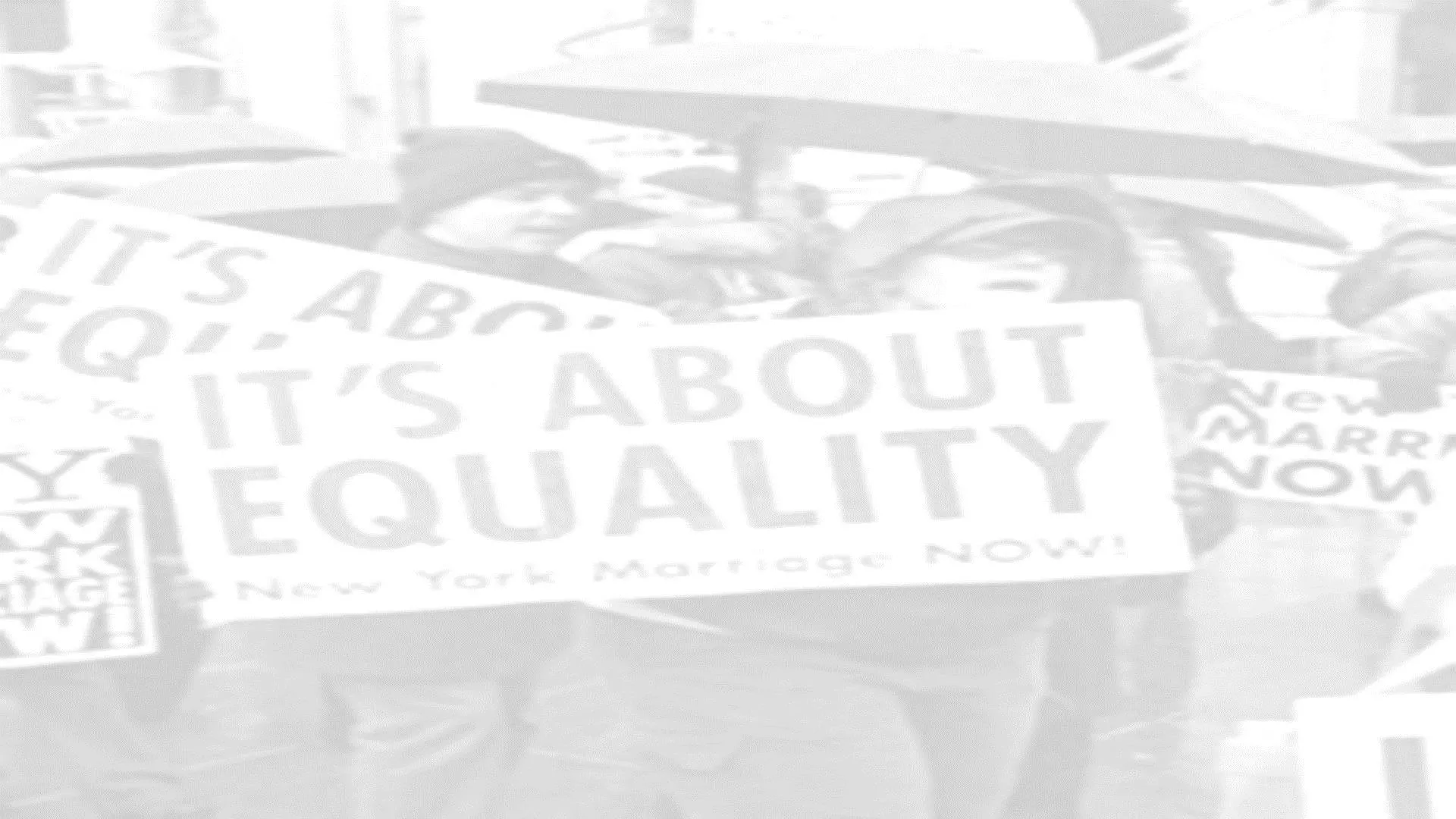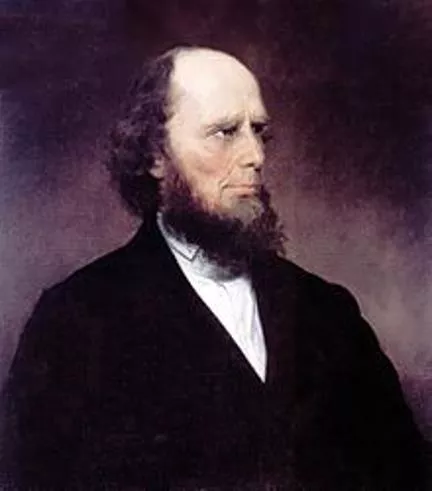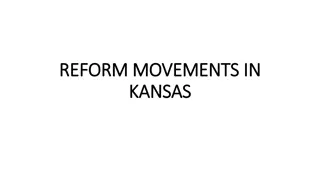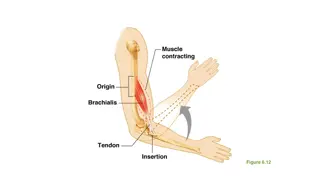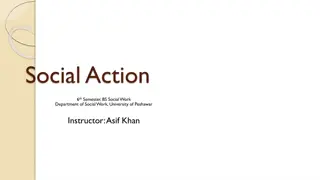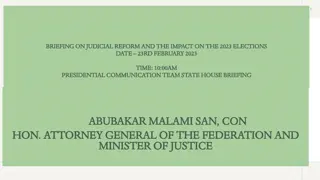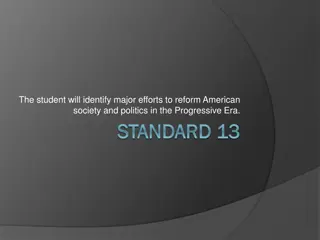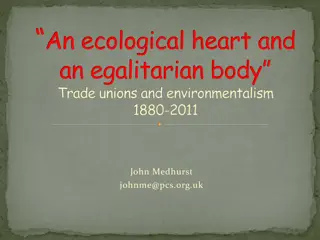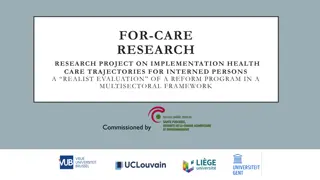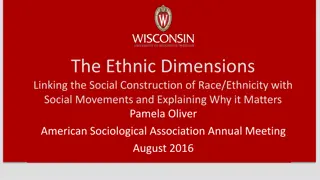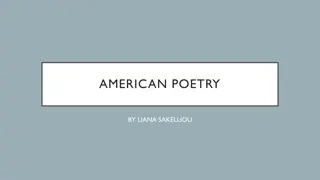The Impact of Reform Movements on American Society
The Second Great Awakening in the 19th century led to a focus on individual responsibility, personal improvement, and societal change. This religious movement influenced the formation of new denominations, established churches, and sparked social reforms. Additionally, the rise of utopian societies highlighted the desire for ideal communities free from corrupt influences. Reform groups emerged to address issues like health care, immigration, gun control, education, and marriage. Through these movements, lasting changes were made to improve different aspects of American society.
Download Presentation

Please find below an Image/Link to download the presentation.
The content on the website is provided AS IS for your information and personal use only. It may not be sold, licensed, or shared on other websites without obtaining consent from the author.If you encounter any issues during the download, it is possible that the publisher has removed the file from their server.
You are allowed to download the files provided on this website for personal or commercial use, subject to the condition that they are used lawfully. All files are the property of their respective owners.
The content on the website is provided AS IS for your information and personal use only. It may not be sold, licensed, or shared on other websites without obtaining consent from the author.
E N D
Presentation Transcript
Reform Make changes in (something, typically a social, political, or economic institution or practice) in order to improve it. Examples: Health Care Reform Immigration Reform Gun Control Education Reform Marriage Reform
Second Great Awakening Second Great Awakening Second Great Awakening was 19th century religious movement in which individual responsibility for seeking salvation was emphasized along with the need for personal and social improvement. Create a Utopian Society Create a Utopian Society Charles Charles Grandison Grandison Finney a) Destiny lies in people s own hands. b) Individualism c) Do God s work on Earth Finney was a Protestant preacher that preached: 1800: 1 in 15 Americans was a member of a church 1850: 1 in 6 Americans was a member of a church
Second Great Awakening Revival of the Great Awakening of the early 18th century Emphasis on personal piety piety over schooling and theology Expressed that every person could be saved through revivals Led to the formation of new denominations denominations revivals
Second Great Awakening Revival s effects consisted of two main strains: The virtues and behavior of the middle class encouraged The ability of individuals to make changes middle class a strong work ethic, frugality were changes to their lives sparked reform movements The Second Great Awakening left a lasting impact on American Society Established Churches Established Churches Social Reform Social Reform
Utopian Societies In the early 1800 s, more than 100,000 formed utopian societies Utopian Society Ideal or perfect society Ideal or perfect society 1820-1860 large attempt to create numerous communities that would serve as perfect societies The people that formed these communities believed that the way to a better life was to separate themselves from the corrupting corrupting influence of the larger society Practiced cooperative or communal living cooperative or communal living and rejected the idea of private property 100,000 individuals
Reform Groups Using the readings on page 2 of your packet, fill in the chart on page 3.
Religious Reform Shakers: Shakers: founded by Ann Lee Waterville, New York Beliefs: Beliefs: 1. Equality amongst the sexes and races 2. Live free of sin 3. Communal Living 4. Celibate (No Marriage or Children) 5. Pacifists 6. Known for their simple living, architecture, and furniture
Religious Reform Millerites Millerites: led by William Miller Dresden, New York Beliefs: 1. Jesus Christ would be returning to Earth in the Second Coming 2. World would end in 1843 (No exact date) 3. The Great Disappointment - October 22, 1844, the day Jesus was expected to return came and went 4. No formal Millerite Church exists today
Religious Reform Mormons: Mormons: founded by Joseph Smith Started in New York and ended up in Salt Lake City. Utah Beliefs: 1. New version of the Bible 2. believed in polygamy (more than one wife) 3. Practices common to Mormons include studying scriptures, praying daily, fasting regularly, attending Sunday worship services, participating in church programs and activities on weekdays, and refraining from work on Sundays when possible. Brigham Young Joseph Smith Mormon Journey
Religious Reform Oneida Community: Oneida Community: founded by John Humphrey Noyes in Oneida, New York Beliefs: 1. Idea of the extended family 2. Children were raised by the community 3. Communalism everyone shared property and wealth 4. Belief in Complex Marriage Free Love 5. Mutual Criticism of Members
Education Reform Education Reform In 1800 Massachusetts was the only state requiring free public schools supported by community funds Middle-class reformers called for tax-supported education, arguing to business leaders that the new economic order needed educated workers Under Horace Mann s leadership in the 1830s, Massachusetts created a state board of education and adopted a minimum length school year. Provided for training of teachers, and expanded the curriculum to include subjects such as history and geography By the 1850s the number of schools, attendance figures, and school budgets had all increased sharply
Prison & Mental Health Reform Prison & Mental Health Reform Asylums isolated and separated the criminal, the insane, the ill, and the dependent from outside society Dorothea Dix, a Boston schoolteacher, took the lead in advocating state supported asylums for the mentally ill She attracted much attention to the movement by her report detailing the horrors to which the mentally ill were subjected being chained, kept in cages and closets, and beaten with rods In response to her efforts, 28 states maintained mental institutions by 1860
Temperance Movement Temperance Movement In 1830, Americans drink an average of 5 gallons of liquor a year Reformers argue that drinking causes domestic violence, public rowdiness and loss of family income The real problem is Americans have the habit of drinking all day Temperance Movement undertook to eliminate social problems by curbing drinking Led largely by clergy, the movement at first focused on drunkenness and did not oppose moderate drinking In 1826 the American Temperance Society was founded, taking voluntary abstinence as its goal.
Womens Rights Movement Women s Rights Movement Cult of Domesticity Cult of Domesticity was a widely viewed belief in the 1800s about women s role in society. Elizabeth Cady Stanton and Lucretia Mott led the movement for women to achieve equal rights. Seneca Falls Convention Seneca Falls Convention first women s rights convention ever held in Seneca Falls, NY in 1848. Declaration of Sentiments Declaration of Sentiments - Based on the American Declaration of Independence, the Sentiments demanded equality with men before the law, in education and employment. Here, too, was the first pronouncement demanding that women be given the right to suffrage (vote).
1. Read the first two paragraphs of The Declaration of Independence and the first two paragraphs of the Seneca Falls Declaration. How are they similar? How are they different?
2. Following the first two paragraphs in the Declaration of Independence are listed a series of complaints against the King. Following the first two paragraphs in the Seneca Falls Declaration are listed a series of complaints (sentiments) against American men in 1848. Select five of these sentiments and rewrite them in your own words, modern day English that we can easily understand.
3. Following the list of sentiments, there is a list of resolutions, things the participants at the convention wanted done to solve these problems? Select three of these resolutions and rewrite them in your own words.
4. Can you think of any resolutions that women of today might want to include in a list of resolutions about their life today?
5. If you had been alive and living near Seneca Falls, New York in 1848, would you have attended the convention? Why or why not. (You may have different answers from group members.)
Apply Your Knowledge Apply Your Knowledge Have the goals of these reform movements been achieved today? Explain with specific details.
Closing Question Closing Question Why did America enter a period of social reform in the early 1800s?





